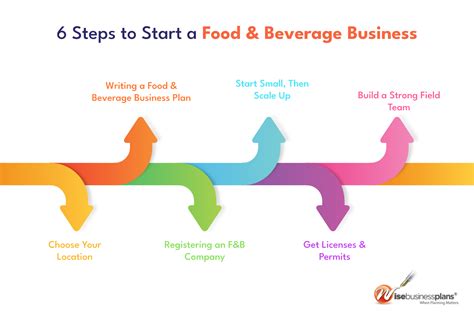The Complete Recipe for a Successful Food and Beverage Business Plan
Starting a food and beverage business is an exciting venture, but success hinges on meticulous planning. A robust business plan acts as your roadmap, guiding you through the crucial stages from concept to launch and beyond. This comprehensive guide outlines the key ingredients for crafting a compelling food and beverage business plan that will attract investors and set your business up for success.
I. Executive Summary: The Appetizer
This is your elevator pitch – a concise overview of your business, highlighting key aspects such as your concept, target market, financial projections, and funding needs. It should be written last, after you've completed the rest of the plan. Think of it as a tantalizing appetizer that leaves the reader wanting more.
II. Company Description: The Main Course
This section delves into the heart of your business. Clearly articulate:
- Your concept: What unique value proposition do you offer? What makes your food and beverage offerings stand out from the competition? Is it the quality of ingredients, a unique cooking style, a specific niche, or a combination of factors? Be specific!
- Your mission statement: Define your business's purpose and overarching goals. What impact do you want to make?
- Your legal structure: Will you be a sole proprietorship, partnership, LLC, or corporation? This decision has significant legal and tax implications.
- Your management team: Showcase the experience and expertise of your team. Highlight relevant skills and qualifications that demonstrate your ability to execute your business plan.
III. Market Analysis: The Side Dish
Understanding your market is crucial. Thorough research will inform your decisions and strategies. Include:
- Target market: Who are your ideal customers? Define their demographics, psychographics, and buying habits. Be precise – the more specific, the better your marketing efforts will be.
- Market size and trends: Analyze the current market size and identify growth opportunities within the food and beverage industry. Are there emerging trends you can capitalize on?
- Competitive analysis: Identify your direct and indirect competitors. Analyze their strengths and weaknesses to pinpoint areas where you can differentiate yourself. What are their pricing strategies? Their marketing approaches?
IV. Products and Services: The Star of the Show
This section details your offerings:
- Menu/product line: Provide a detailed description of your food and beverage offerings. Include pricing and any unique selling points. High-quality images are a must!
- Sourcing and production: Outline your sourcing strategy for ingredients and supplies. Will you produce everything in-house, or will you outsource some aspects? Explain your production process.
- Quality control: Describe your procedures for ensuring consistent quality and food safety.
V. Marketing and Sales Strategy: The Secret Sauce
A well-defined marketing and sales strategy is essential for attracting and retaining customers. Include:
- Branding and messaging: How will you position your brand in the market? What is your unique brand story?
- Marketing channels: Outline your marketing plan, including social media, advertising, public relations, and any other relevant channels. Consider local partnerships and community engagement.
- Sales strategy: How will you generate sales? Will you use online ordering, delivery services, or a combination of approaches?
VI. Operations Plan: The Recipe
This section outlines the day-to-day operations of your business:
- Location and facilities: Describe your chosen location and its suitability for your business.
- Equipment and technology: List the necessary equipment and technology.
- Staffing: Outline your staffing needs and your hiring strategy.
- Supply chain management: Detail your system for procuring ingredients and supplies.
VII. Financial Projections: The Financial Garnish
This is a critical section. Include:
- Start-up costs: A detailed breakdown of all initial expenses.
- Funding request (if applicable): Clearly state how much funding you're seeking and how you plan to use it.
- Projected income statement: Forecast your revenue and expenses for the next 3-5 years.
- Cash flow projections: Project your cash inflows and outflows to ensure you have enough working capital.
- Break-even analysis: Determine when your business will become profitable.
VIII. Appendix: The Extra Touches
Include supporting documents such as market research data, resumes of key personnel, permits and licenses, and any other relevant information.
By following this comprehensive recipe, you can craft a compelling food and beverage business plan that will not only secure funding but also serve as a guiding force throughout your entrepreneurial journey. Remember, a well-structured and well-written plan is an essential ingredient for success.
